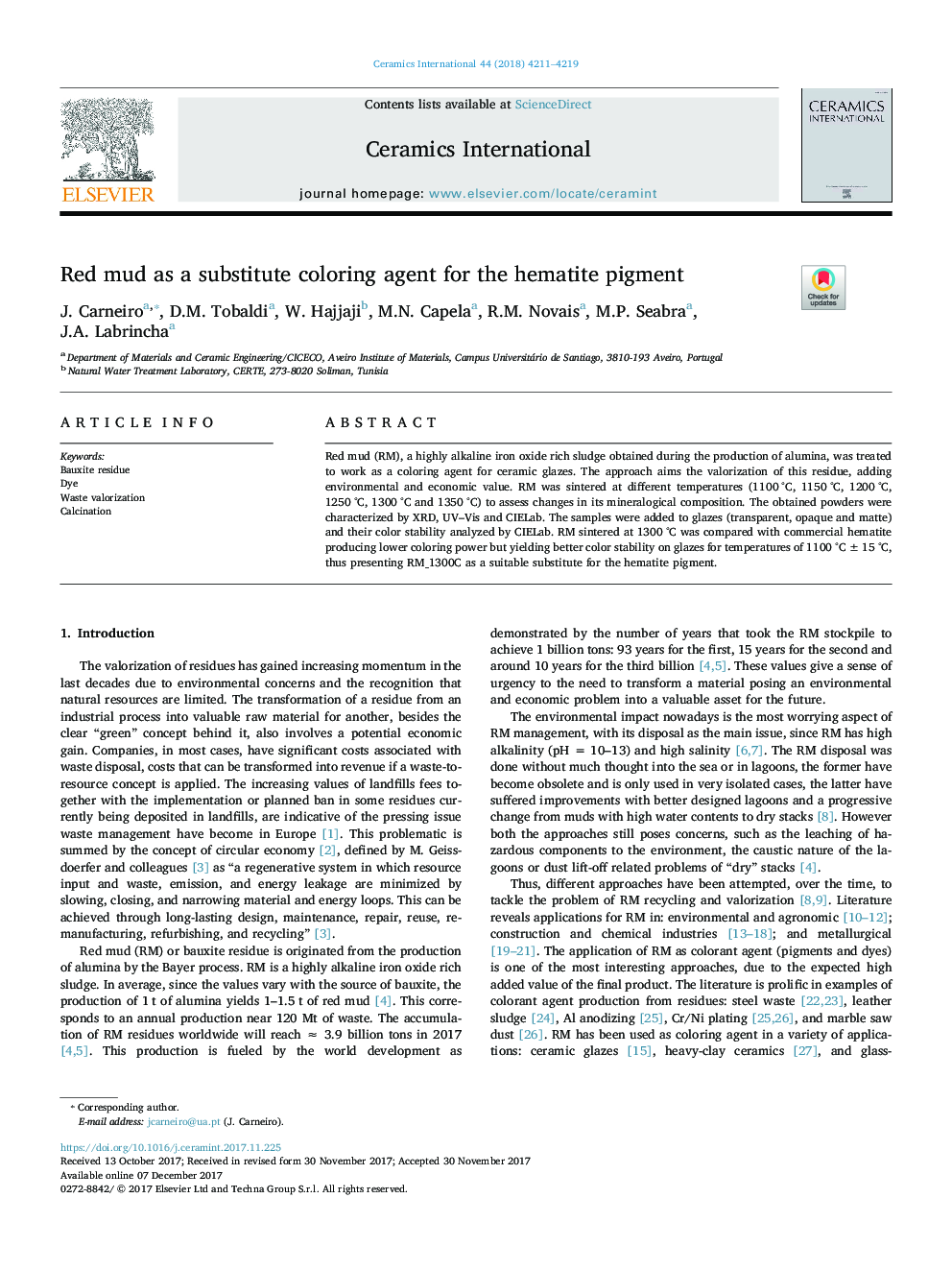| Article ID | Journal | Published Year | Pages | File Type |
|---|---|---|---|---|
| 7888568 | Ceramics International | 2018 | 9 Pages |
Abstract
Red mud (RM), a highly alkaline iron oxide rich sludge obtained during the production of alumina, was treated to work as a coloring agent for ceramic glazes. The approach aims the valorization of this residue, adding environmental and economic value. RM was sintered at different temperatures (1100 °C, 1150 °C, 1200 °C, 1250 °C, 1300 °C and 1350 °C) to assess changes in its mineralogical composition. The obtained powders were characterized by XRD, UV-Vis and CIELab. The samples were added to glazes (transparent, opaque and matte) and their color stability analyzed by CIELab. RM sintered at 1300 °C was compared with commercial hematite producing lower coloring power but yielding better color stability on glazes for temperatures of 1100 °C ± 15 °C, thus presenting RM_1300C as a suitable substitute for the hematite pigment.
Related Topics
Physical Sciences and Engineering
Materials Science
Ceramics and Composites
Authors
J. Carneiro, D.M. Tobaldi, W. Hajjaji, M.N. Capela, R.M. Novais, M.P. Seabra, J.A. Labrincha,
